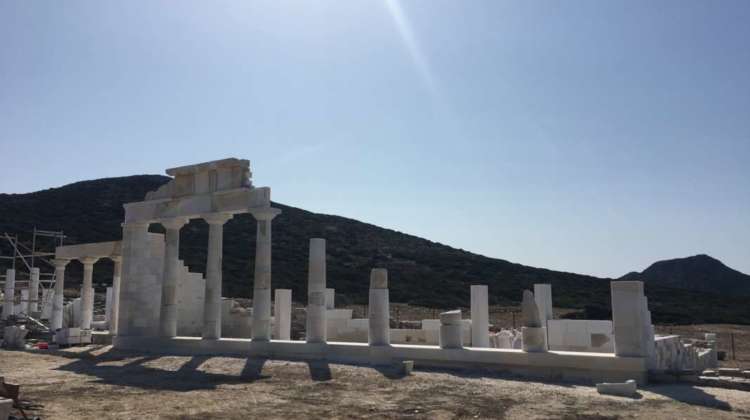
Excavation at the sanctuary of Apollo at the site of Mandra Despotiko
Restoration of the archaic building D
May – June 2023
Excavation
The systematic excavation at the site of Mantra in Despotiko, which began in 1997 under the supervision of the Ephorate of Antiquities of Cyclades (former KA EPKA) under the direction of Yiannos Kouragios, is one of the most important excavations in the Aegean, which has brought to light a very rich sanctuary of Apollo, unknown from written sources, but also an extensive installation with a lifespan of many centuries.
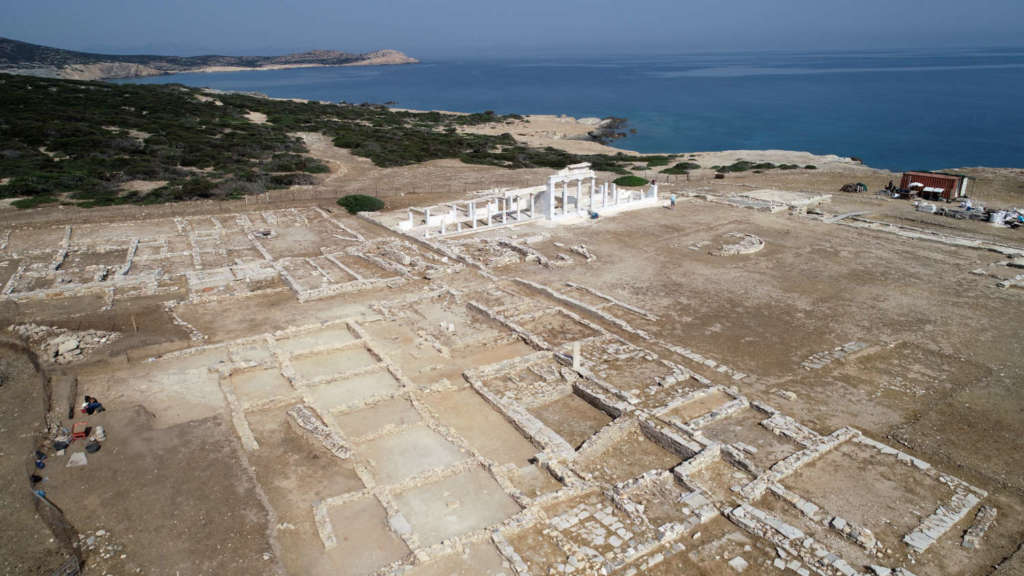

After almost 25 years, we now know that the earliest remains at the site date back to the Early Iron Age and specifically to the second half/end of the 9th century, i.e. several centuries before the Archaic period, which marks the peak for the site, when after a radical reorganization a new – architecturally separated – sacred temple was founded.
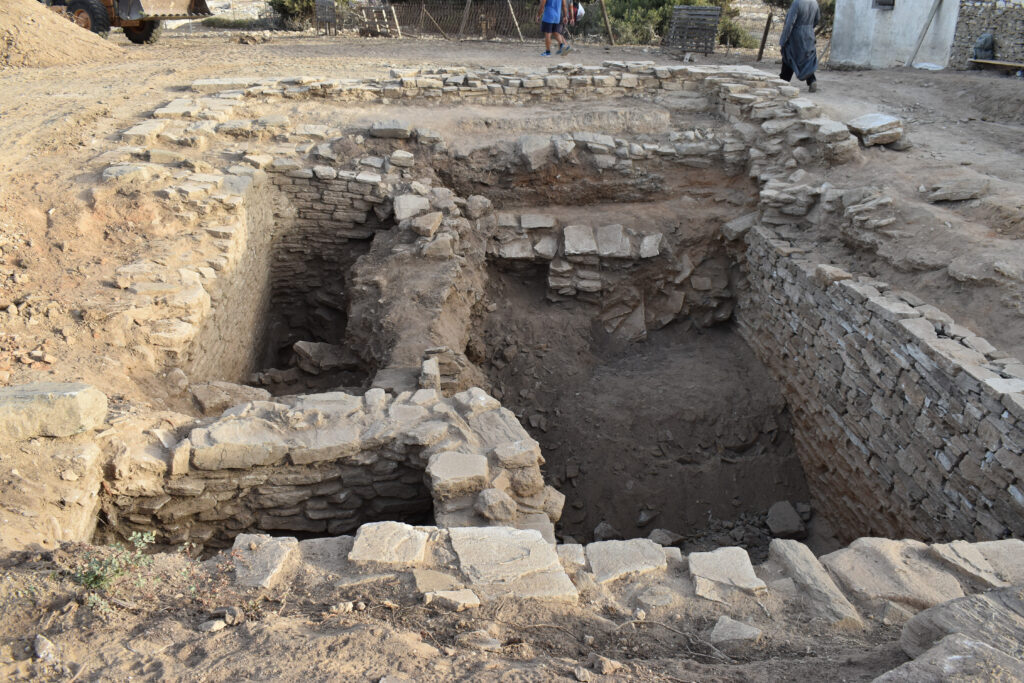
The excavation works are still in progress, and every year, new data is added to the history of the islet. Last year’s excavation season significantly enriched the existing data on the topography of the site, as two new archaic buildings were identified. The main areas of investigation were the archaic cisterns and the “Building” Ω.
Since 2020, a complex system of water collection and management has been excavated at the foot of the hill south of the sanctuary. The central tank (Tank 1) has experienced at least two architectural stages. In its final form, it had internal dimensions of 8.5m x 9m. The walls of the tank are particularly strong, with a width of 70-80cm. Thick hydraulic mortar of a whitish colour covered the entire surface. The same mortar is also coated on the bottom of the tank.
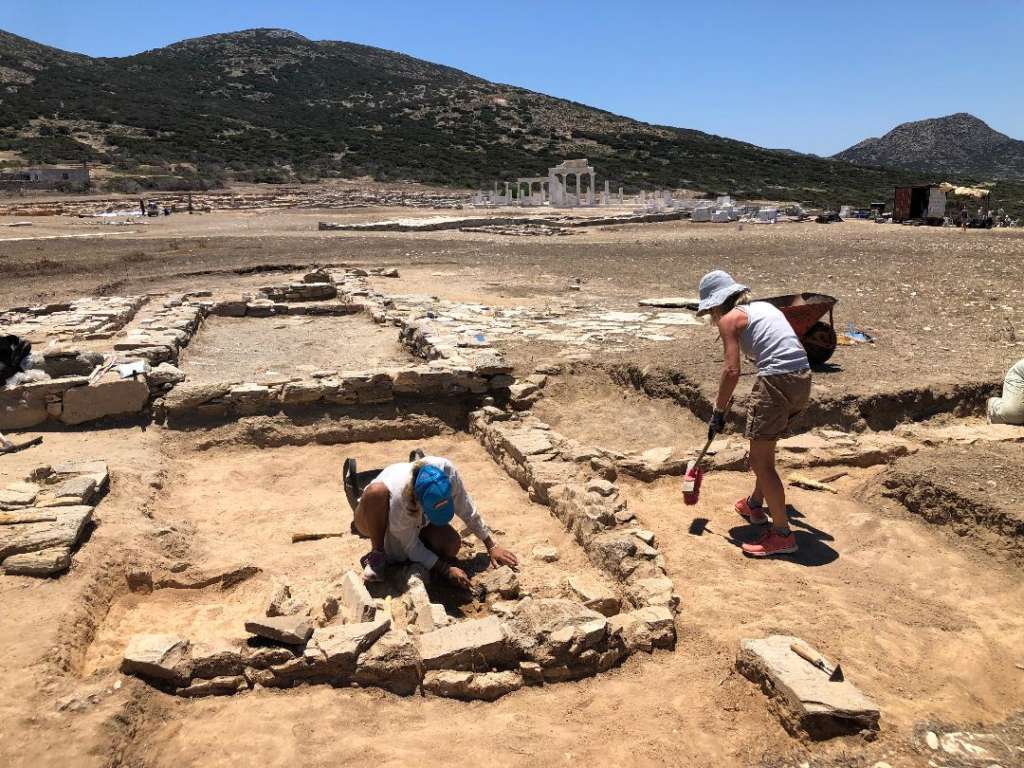
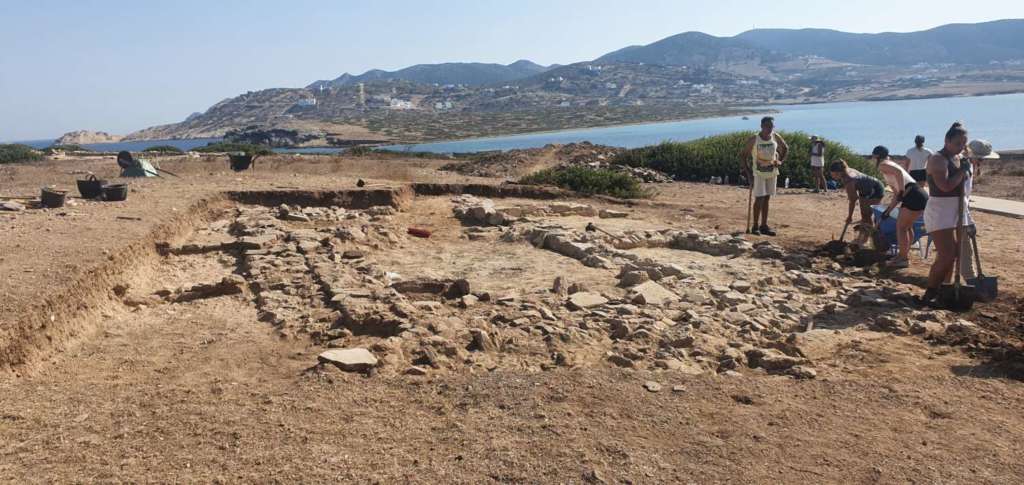
At a distance of roughly one meter south of the large reservoir, another rectangular bilateral structure, measuring 6m x 4m, was revealed, separated into two rectangular spaces that can be interpreted as “prolakkia”, i.e. small water filtration tanks. This is where a stone-built pipeline made of large slate slabs, 25 m long, which originate from another large built tank, circular in shape, with a diameter of 11 m. feeds. Its walls are preserved to a height of roughly 1 meter.
The most important findings of the 2023 excavation period were revealed when further excavation was conducted at a big archaic structure originally found in 2020, not far from the port (conventionally Building Ω). During the excavation, a headless male torso of the so-called strict rhythm came to light and can be dated immediately after 480 BC.
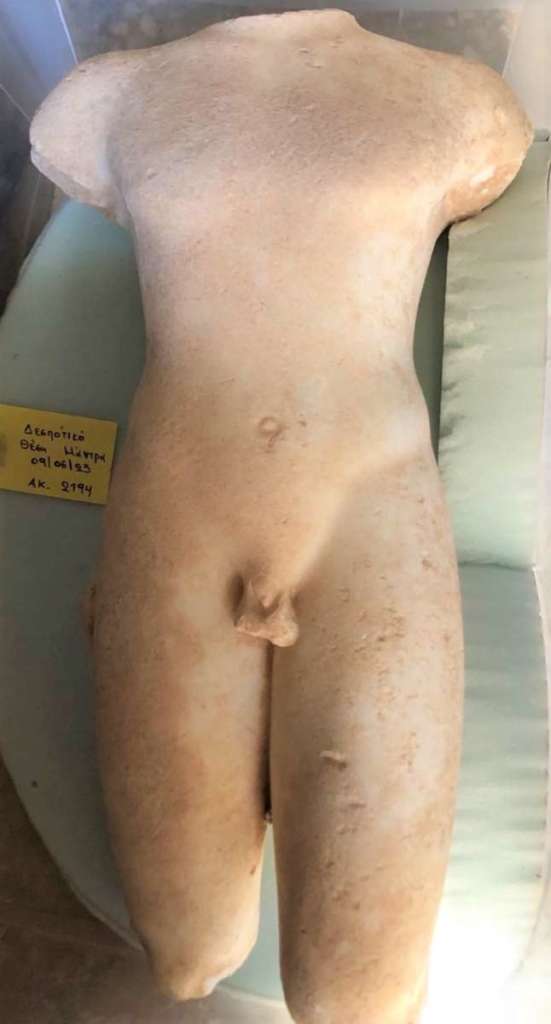
The most important findings of the 2023 excavation period were revealed when further excavation was conducted at a big archaic structure originally found in 2020, not far from the port (conventionally Building Ω). During the excavation, a headless male torso of the so-called strict rhythm came to light and can be dated immediately after 480 BC.
A wall of Late Antiquity was found perpendicular to the archaic structure, the exploration of which held many ‘surprises’, since in various parts of the wall, parts of archaic kouros were found embedded in the second half of the 6th century BC as building material: three fragments of the same kouros, a work of the second half of the 6th century BC, part of the thighs and groin of a second kouros, part of an upper torso probably related to the previous one, and part of an arm and leg. In the same wall, two parts of the lower limbs of two other kouros, a seated female statue and two marble bases of votive columns were found last year.
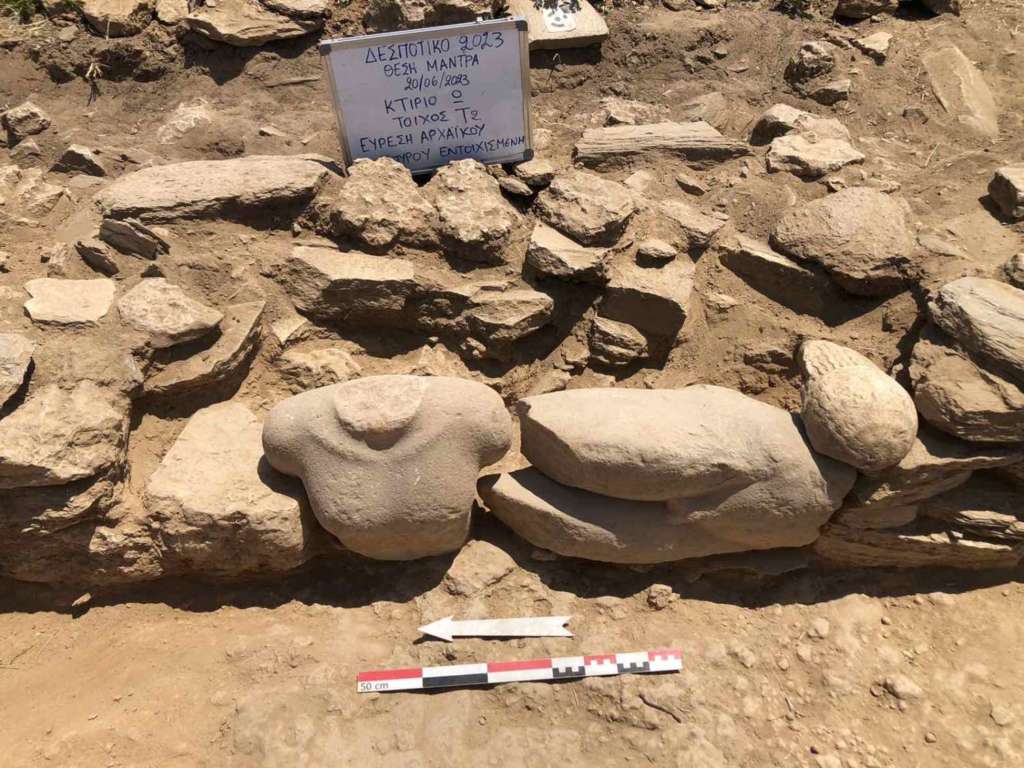
The concentration of a large number of sculptures and bases in this area may indicate that this was their original location.
As always, maintenance and restoration works continued in 2023 (G. Karabalis and E. Tsavos team).
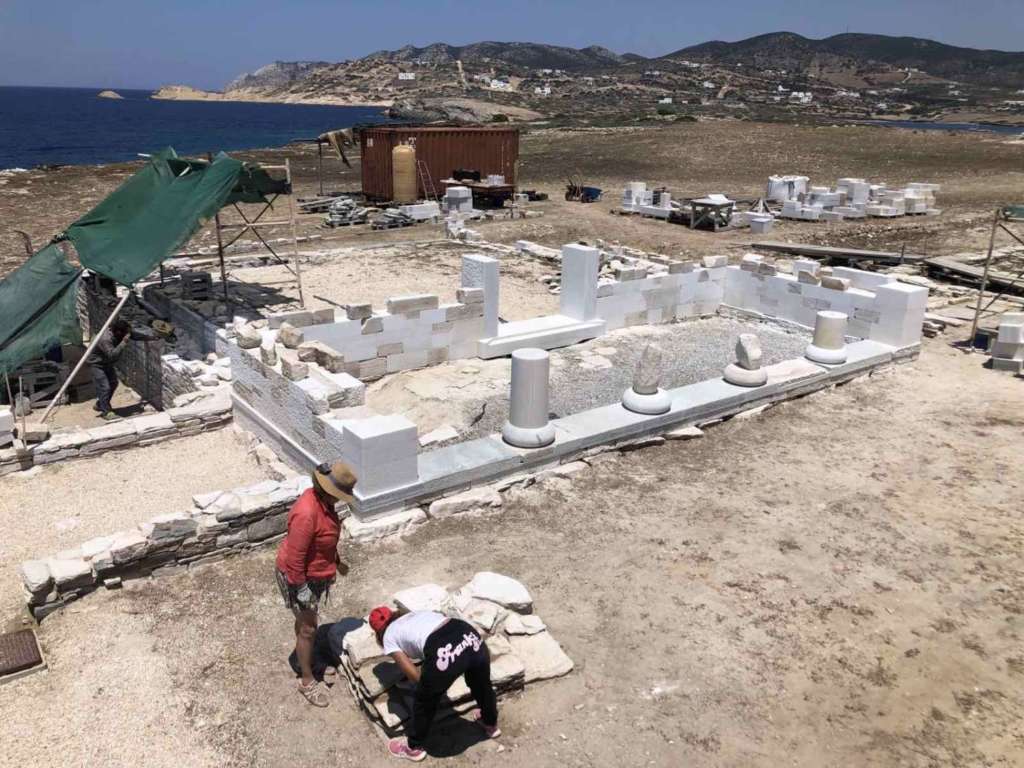
In terms of restoration, the reconstruction of Building D, which occupies the NE corner of the temple and had a religious character, progressed significantly. This building, which was very damaged, as a shepherd’s cheese factory was founded on it, dates back to the third quarter of the 6th century. B.C.
The team and its supporters are: The excavation and restoration works in 2023 were implemented with the support of AIGEAS AMKE (Athanassios & Marina Martinos), P&A Kanellopoulos Foundation, A.G. Leventis Foundation, DIKEMES (C.Y.A.), I. Latsis Foundation, Marion Stassinopoulos, “Friends of Paros & Antiparos” Society and several individual friends of the excavation.
The restoration works were carried out by the specialized marble craftsmen V. Hatzis, M. Armaos, G. Skaris, G. Palamaris, L. Ioannou, and G. Kontonikolaou under the supervision of architect Goulielmos Orestidis.
The members of the scientific team who participated in the excavation were: Ilia Daifa (University of Thessaly), Alexandra Alexandridou (Assistant Professor at the University of Ioannina), Dr. Erica Angliker (BSA), Dr Katerina Karakasi, Dr. Caspar Meyer (Bard Graduate Center), Dr. Christina Konstantakopoulou (EIE, Birkbeck College), Luigi Lafasciano, the geologist Dr Erich Draganits (University of Vienna), graduate and postgraduate students of the University of Ioannina Louisa Panopoulou, Mata Samioti, Anastasia Mallikopoulou and Lena Aslanidou, the postgraduate student of the Aristotelian University of Thessaloniki Ignatios Assatof together with students from non-Greek universities (C.Y.A., Birkbeck College, Bard Graduate Centre N.Y., Instituto de Estudos Avancados da Unicamp Brazil).
Yannos Kouragios,
Ilia Daifa,
Alexandra Alexandridou

Leave a Reply